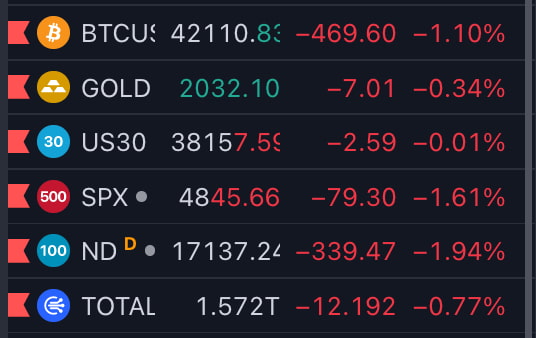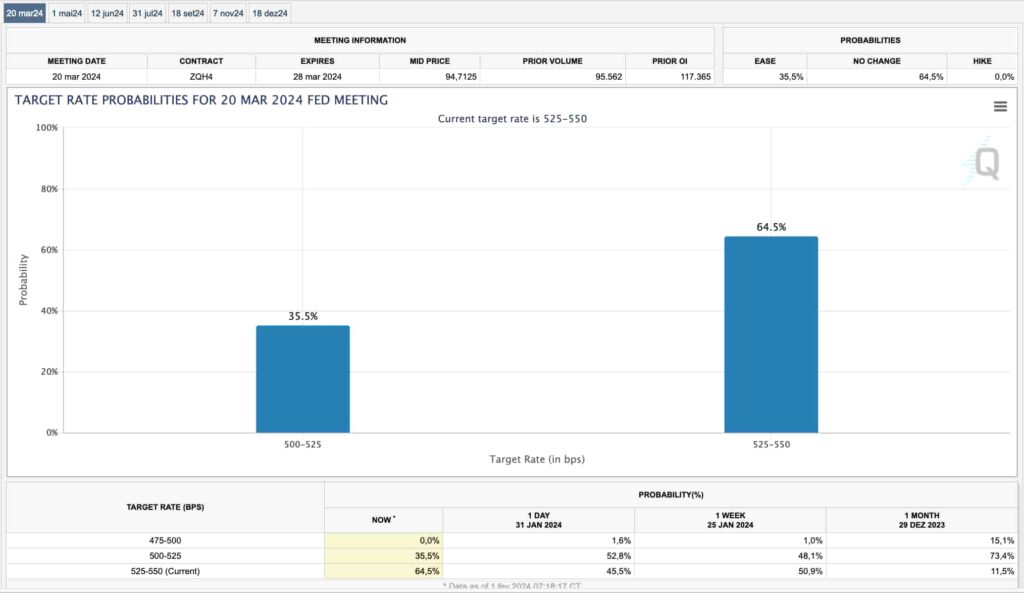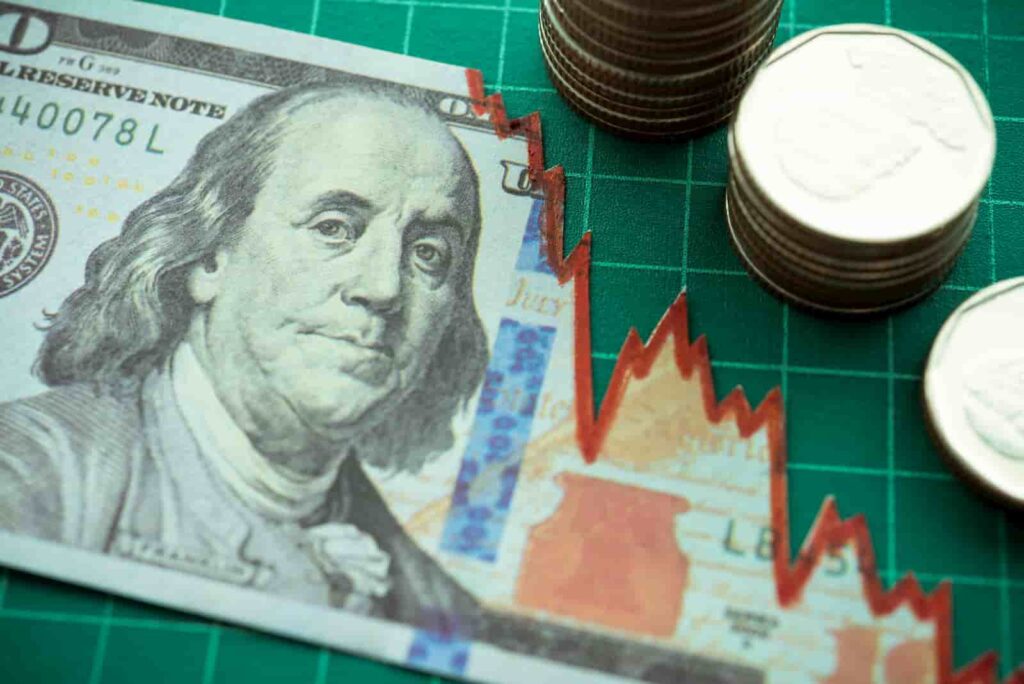The Federal Reserve meeting on January 31 announced another decision to keep its interest rate target at 525-550 basis points (bps) or 5.25-5.50%. This was the overall expected outcome since the last meeting.
However, the shock came with Jerome Powell’s hint for March’s meeting, saying an interest rate cut is not likely. Consequently, leading financial indicators dropped massively following the announcement, causing markets to bleed.
In particular, Finbold gathered data on six financial indicators from TradingView on February 1. Gold, Bitcoin (BTC), and the total market capitalization of all cryptocurrencies lost 0.34%, 1.10%, and 0.77% against the dollar.
Meanwhile, Dow Jones Industrial Average (US30), S&P 500 (SPX), and Nasdaq 100 (NDX) dropped by 0.01%, 1.61%, and 1.94%, respectively. These are the three leading indicators for the stock market in the United States, signaling panic sell-offs.

March interest rate expectations
On March 20, 2024, the Federal Reserve meets again to decide its target interest rate. The market’s expectations drastically changed following Fed’s most recent hint, which explains the negative reaction.
Notably, 73.4% of interest rate traders were pricing a Fed’s target rate cut for March on December 29, 2023. On January 31, 52.8% of these traders still expected a cut. Therefore, over half of the market had to reposition amid the surprising news, according to data from the CME Group.

As of writing, 64.5% of the market expects the March interest rate target to remain the same. On the other hand, 35.5% bet the Fed will change its mind and cut rates to 500-525 bps. This could bring volatility for all markets in the following weeks.
Interestingly, a more aggressive cut of 50 bps is not priced anymore. This is a 15% probability change from the market’s predictions one month ago, on December 29.
Finance giants expect first interest rate cut to May
In this context, two institutional finance giants have changed their expectations of the first interest rate cut to May. Evan Gold reported about this change on X (formerly Twitter) on February 1, mentioning Goldman Sachs (NYSE: GS) and Barclays (NYSE: BCS).
Moreover, Evan said the Bank of America (NYSE: BAC) is even more bearish, forecasting a rate cut only for June. All three finance giants expected this to happen in March before yesterday’s Fed meeting.
This evidence shows how uncertain and volatile markets can be due to their dependence on the Federal Reserve decisions. Investors must position cautiously and follow further developments and relevant data for valuable insights moving forward.
Disclaimer: The content on this site should not be considered investment advice. Investing is speculative. When investing, your capital is at risk.







